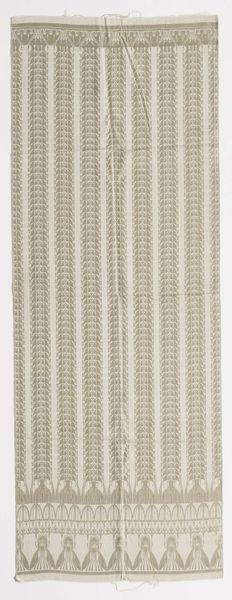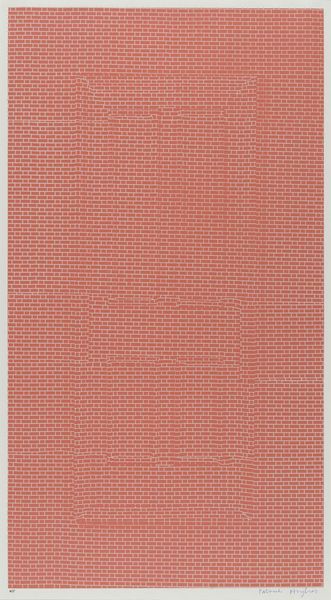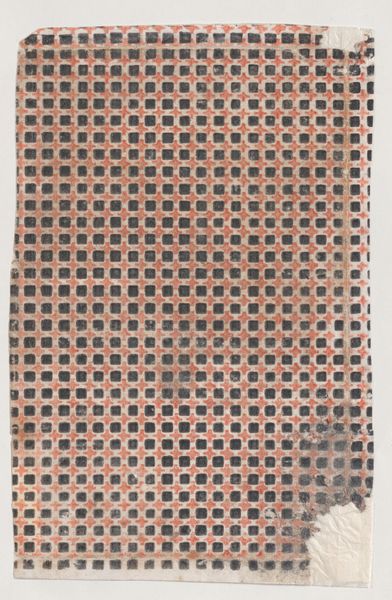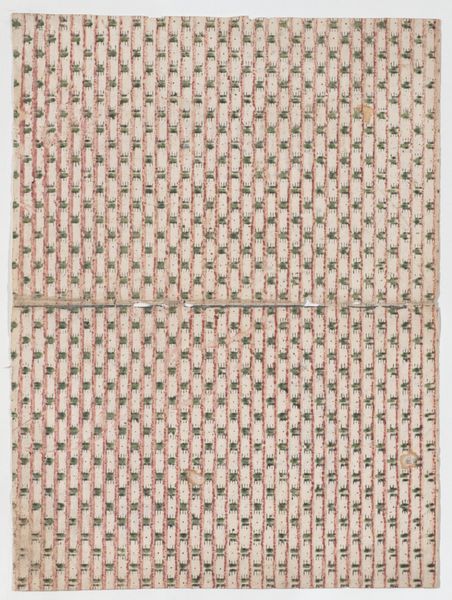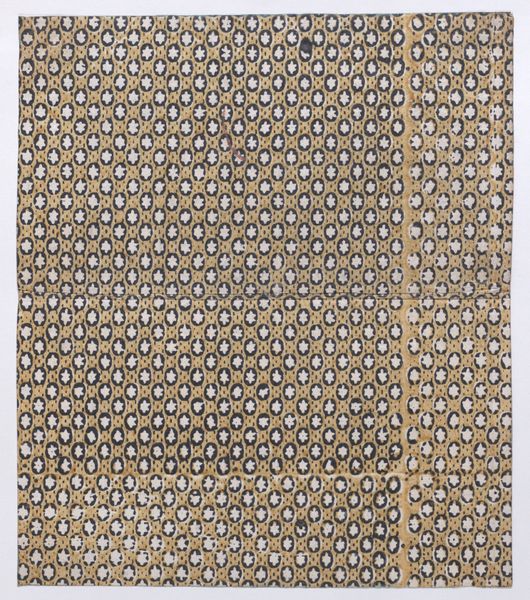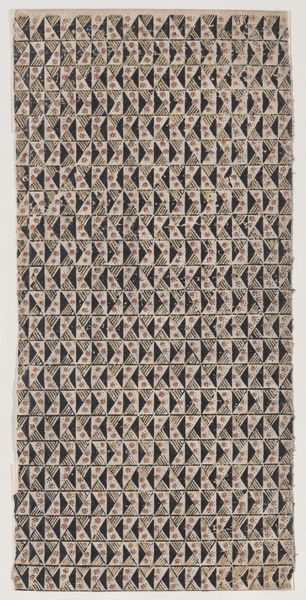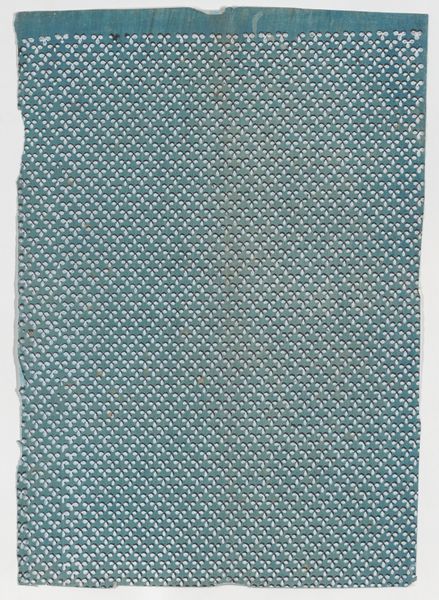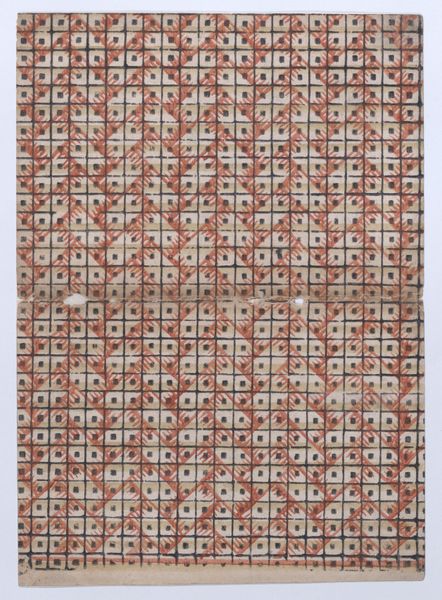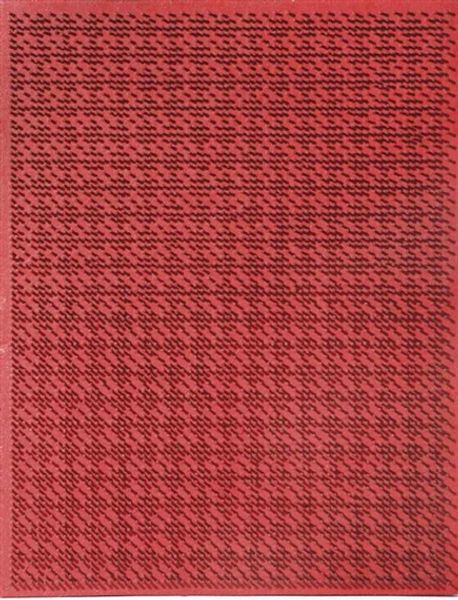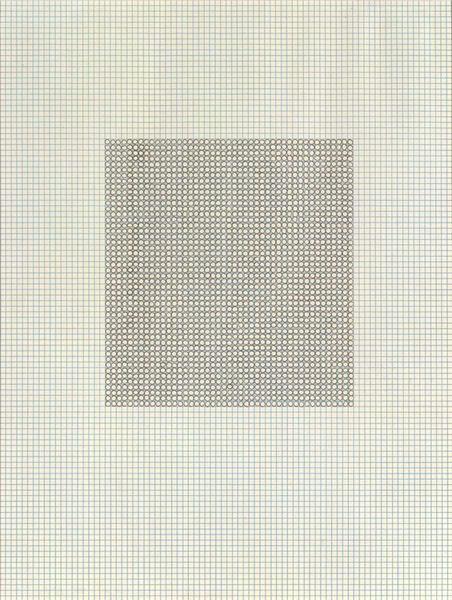
textile
#
art-nouveau
#
textile
#
repetitive shape and pattern
#
organic pattern
#
geometric
#
repetition of pattern
#
vertical pattern
#
line
#
regular pattern
#
pattern repetition
#
decorative-art
#
imprinted textile
#
layered pattern
#
funky pattern
#
combined pattern
Dimensions: height 167.0 cm, width 58.2 cm
Copyright: Rijks Museum: Open Domain
Curator: Immediately, I'm struck by its sense of order, the calm, muted green. Editor: This is a textile work, titled "Wandbespanning," which translates to "Wall Covering," created between 1911 and 1915 by Chris Lebeau. You can find it here in the Rijksmuseum. It’s a weaving. Curator: It feels almost… hypnotizing. The repeating pattern creates a strong visual rhythm. The materiality adds a wonderful tactile sense too. You can feel the textile, imagining its warp and weft. Editor: The textile utilizes many geometric forms –notice how simple triangles and arches combine into more complex motifs, echoing perhaps stylized botanical forms. What do you make of this stylization? Curator: Well, this piece does belong to the Art Nouveau movement, characterized by flowing lines and designs that take inspiration from organic forms and nature. It appears Lebeau combined the popular style with older symbolism to enhance its emotional expression. It may evoke sentiments and subconscious narratives of natural order through pattern and repetition. Editor: And how those vertical lines draw the eye upward! It’s such a successful marriage of the natural and the meticulously constructed. The borders also interest me with their unique, detailed ornamentation. Curator: The border at the top could symbolize a canopy of nature, but I'm equally drawn to the base. Do those forms resemble figures in ritualistic dress to you? The textile feels like an entire worldview, structured but with roots in primordial nature worship, echoing ancient beliefs in regeneration. Editor: Indeed, there's something of the sacred about this textile. Its patterns, seemingly simple, feel imbued with a deep symbolic order, the interplay of dark green against lighter threads forming what I see as archetypes and geometric harmony. Curator: The impact and appeal lie not just in individual forms, but their constant recurrence, suggesting perhaps the timeless, recurring themes found throughout nature and life itself. A symbolic space, and through material means as well. Editor: Yes, ultimately it shows how something as "simple" as a pattern can provide incredibly complex layers of analysis—offering entry points into both art history and individual emotional and psychological interpretation.
Comments
No comments
Be the first to comment and join the conversation on the ultimate creative platform.
